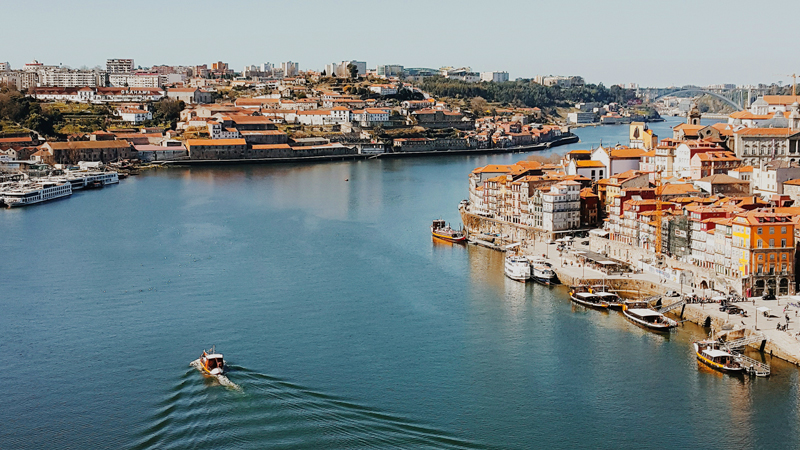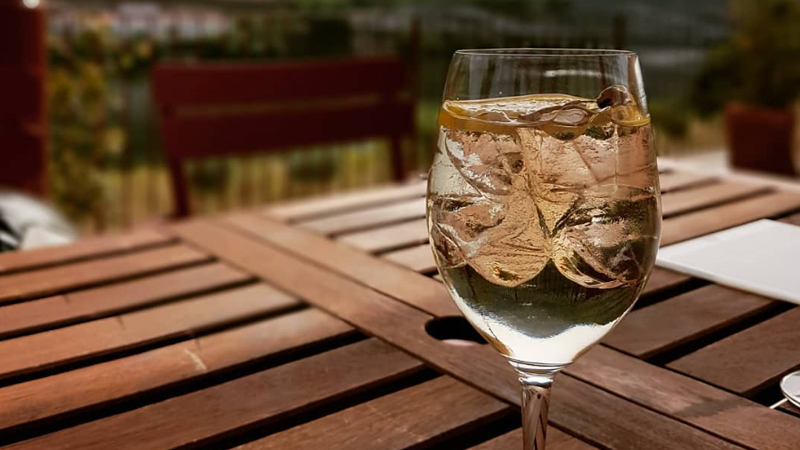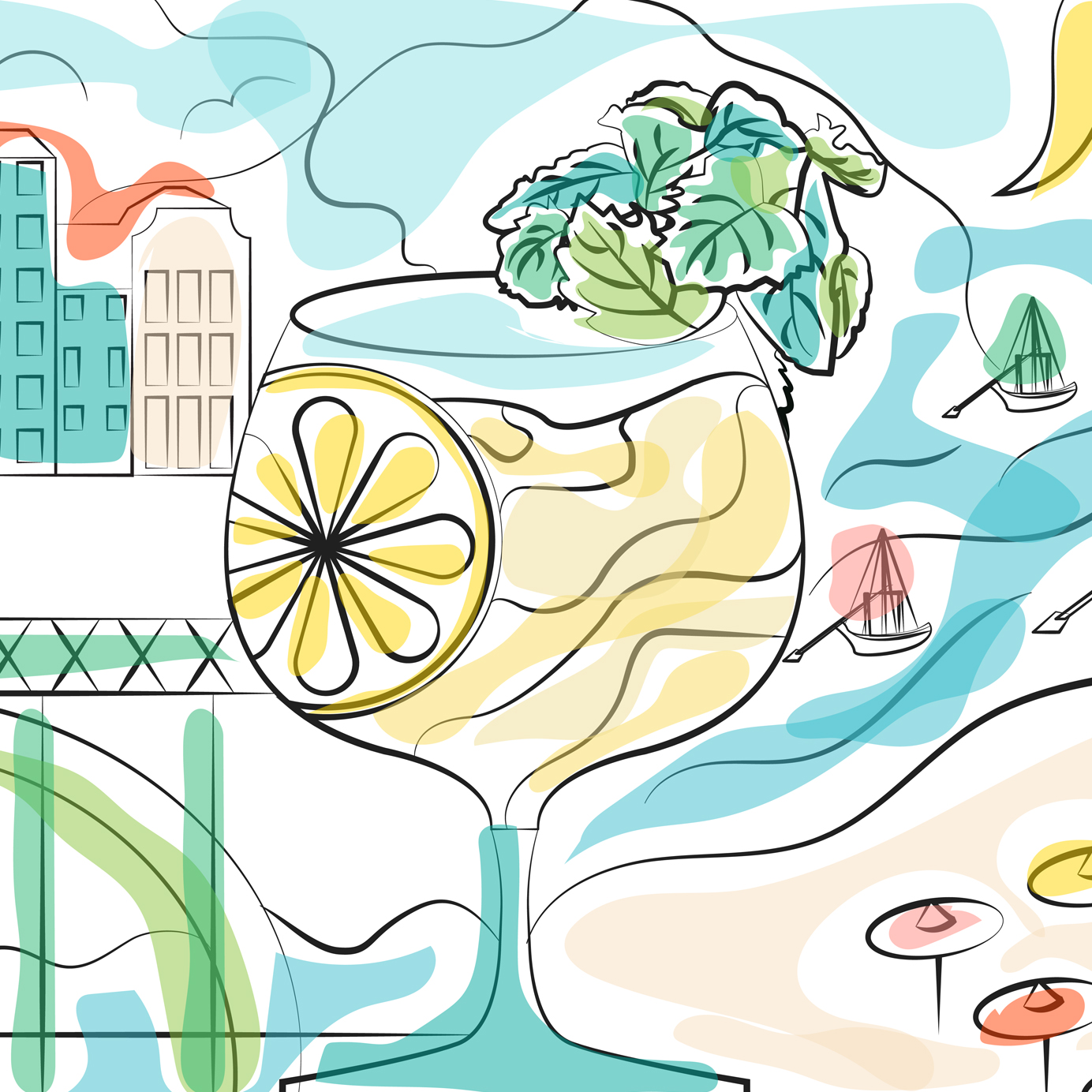Porto tonico, a breezy combination of dry fortified wine and tonic water, is one of the world’s great aperitifs. It’s easy to make, fruity without being sweet, and gently refreshing.
In Portugal, the early-evening cocktail is so widespread it almost seems compulsory. After work, you relax with a porto tonico. Going to the beach? Have a porto tonico. A dark tavern? Porto tonico. A white-tablecloth restaurant serving five-course tasting menus? Sirs and madams might want to start with a porto tonico.
The idea that one cocktail could appeal to so many people in multiple settings might puzzle us Americans weaned on rotating taps and seasonal specials. In the porto tonico’s case, however, simplicity is part of the allure.
Made with a two-to-one ratio of tonic water to white port, the porto tonico is what you drink when “you don’t want to think about what you’re drinking,” Andy Seymour, founder of Liquid Productions, says.
The origins of the drink are unknown, but Seymour suspects it came about as a result of convenience and accessibility. He compares Portugal’s porto tonico ritual to the way Americans order a glass of Champagne or rosé before committing to a bottle of wine at dinner. “It’s the end of the day, you’re not sure what you’re going to be eating or drinking yet, let’s have something super easy,” he says.

While Americans tend to think of port as a dessert wine served in fancy glassware, Portuguese drinkers have no such baggage. The fortified wine shares its name with both the country and its second-largest city, Porto, and is quite literally on everybody’s lips.
The category spans aged tawny investment pieces, ruby pours with ripe fruit, and dry white bottles ready to be drunk on the rocks with tonic this and every afternoon. White port is made from indigenous white wine grapes, and bottles are available for the equivalent of $10 or less.
The porto tonico is a pleasantly unfussy concoction, perfect for the sort of place that successfully abandons austerity for innovation when faced with economic distress. At bars in Lisbon or Porto, the country’s two largest cities, your porto tonico might be served over ice in a Collins glass, an oversized goblet, a pint, or a flute. Potential garnishes include “mint sprigs, a slice of cucumber, lime wedge, lemon wedge, whatever you got laying around,” Seymour says.
Clocking in at 16 to 20 percent ABV, white port also makes for a low-proof cocktail ingredient. You can easily have a porto tonico or two before dinner without losing your appetite or manners.
“When you’re entertaining, some people want a stronger drink, some people want a weaker drink,” Adrian Bridge tells GQ. White port “may be 20% alcohol, but when it’s diluted with tonic water, it’s dropping down to 10.” Bridge is the CEO of Fladgate Partnership, owner of storied port labels like Taylor Fladgate, Fonseca, and Croft.
If those names sound more Anglo than Portuguese, that’s because the United Kingdom is intimately involved in the history and development of port wine. When Great Britain warred with France in the 17th and 18th centuries, it stopped importing Bordeaux and started buying wine from Portugal. Port, the freedom fries of the Tudor era, was reportedly fortified with brandy and other spirits in order to preserve it for the long voyage from Portugal to the U.K.
In the early 1700s, “one harvest made wines richer and sweeter than normal,” Bill St. John writes in the Chicago Tribune. “After then, the Douro winemakers crafted wines that were sweeter by the year and added greater increments of the spirit. These wines were the precursor of today’s port.”
Tonic water, another byproduct of British foreign policy, is well-suited to the mellow, understated flavor of white port. “It has great crispness and acidity that makes for good and balanced cocktails,” Seymour says. “But it also has a bit of residual sugar in it.” It is a versatile foil for cocktails, “like sherry,” he says.
Porto tonico destinations abound in Portugal. Sandeman, the 1790 sherry and port label, has a cocktail bar at its cellar on the Douro River in Porto, plus pop-up installations throughout the city. They serve a classic version, called the Sandeman Splash, plus custom white port cocktails. A mile across the river, the bar and concept shop Armazem pours classic porto tonicos in goblets brimming with ice and citrus. Charmingly old-school Lisbon steakhouse Cafe de Sao Bento makes its porto tonico with house tonic or London speciality label Fever-Tree.
Like port wine itself, the porto tonico is a relatively new phenomenon. The need for a low-proof, easy-drinking aperitif, however, is both timeless and boundless. Lillet, the 1870 fortified Bordelais blend, endures in France, with or without the once-salubrious tonic. Go to a bar in Italy’s Veneto region (and, increasingly, the USA), and seemingly everyone is sipping an Aperol Spritz for the same reason.
Americans tend to cycle through food and drinks trends quickly, creating and then overwhelming markets with our mammoth appetites for quinoa, avocados, and rosé. The existence and endurance of the porto tonico speaks to the importance of moderation in all things, from austerity to aperitif hour.

Cocktail Recipes
White port is less familiar or accessible than red varieties in the United States, but online retailers stock labels like Fonseca Siroco and Ferreira. Taylor Fladgate, a 1692 winemaker, introduced its crisp Taylor Fladgate Chip Dry white port in 1934. It will be available in limited quantities (approximately 400 to 500 cases) in the United States in late September 2018.
Classic Porto Tonico
Ingredients
2 ounces dry white port
4 ounces tonic water
Directions
- Combine all ingredients in a highball or Burgundy wine glass.
- Top with ice.
- Garnish with lime or lemon wedge, slice of cucumber, sprig of mint, or nothing at all.
The First Wind
Recipe courtesy of Andy Seymour, Liquid Productions.
Ingredients
2 ounces white port, such as Fonseca Siroco
¾ ounce fresh cucumber juice
1 ½ ounces tonic water
¼ ounce agave syrup
Cilantro leaves
Directions
- Muddle cilantro and agave syrup in a cocktail shaker.
- Fill with ice, and then add cucumber juice and white port and shake.
- Strain over fresh ice in a Collins glass.
- Top with tonic water.
